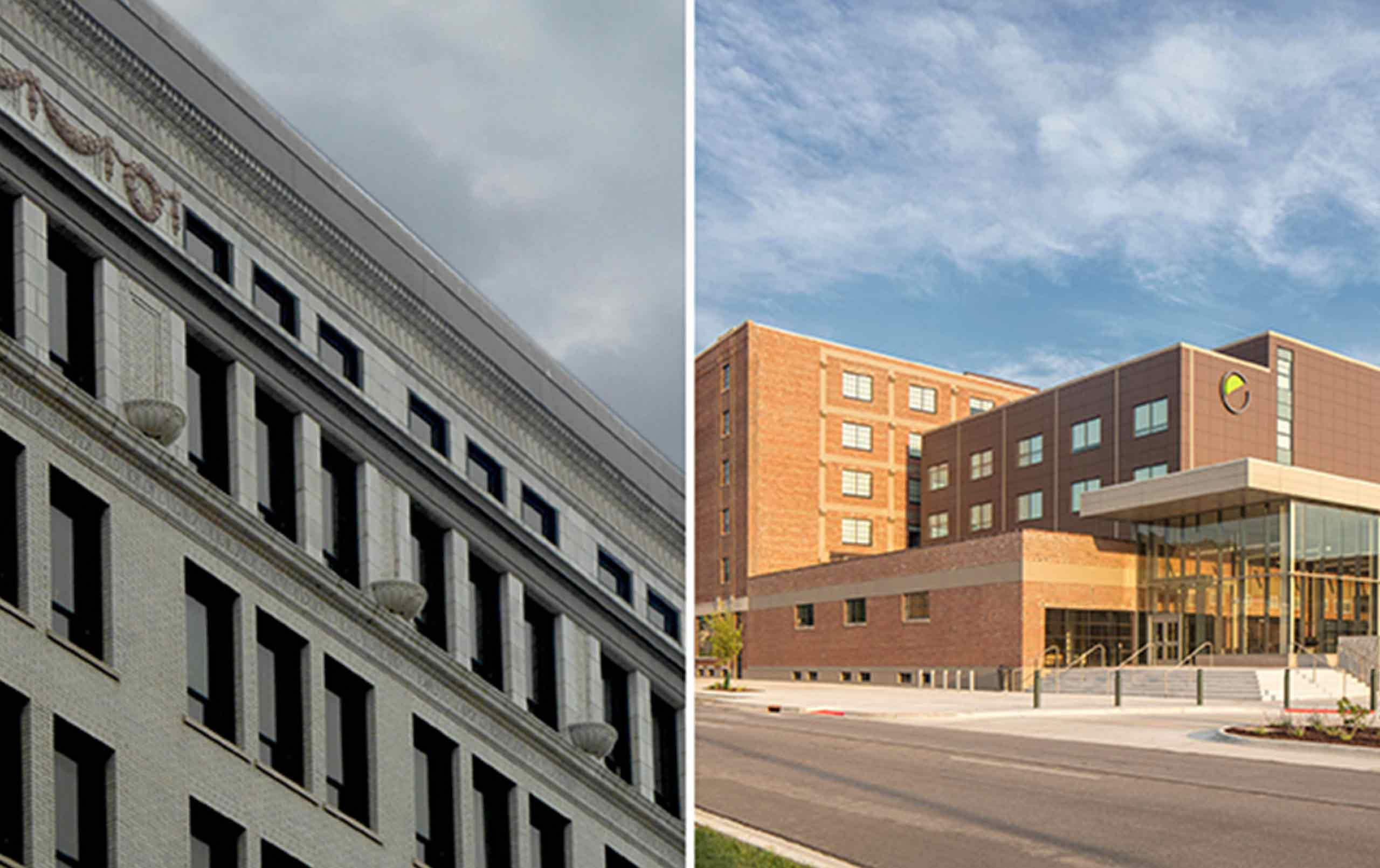
Adaptive reuse projects transform century-old buildings into modern dwelling places while preserving historic features
The Chase Bank building and the O’Rourke Building have beautified downtown Moline for nearly a century. But this year, both buildings finished a conversion that completely changes how the buildings are used. The renovations celebrate, rather than cover up, the buildings’ historic highlights.
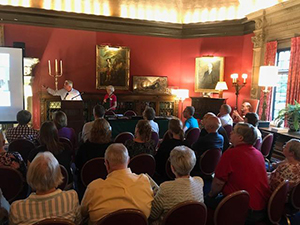
In the 5 & 15 Apartments, formerly the Chase Bank building, residents enjoy original marble and brass, a spiraling staircase, and stunning views of the Mississippi River. Six blocks west, guests in Element Moline experience modern amenities amid the brick walls and concrete columns and floors that tell the story of the building’s century-old life as a warehouse and distribution facility known as the O’Rourke Building.
The projects, designed by Legat Architects and built by Russell, received adaptive reuse awards from the Moline Preservation Society. The annual competition honors projects that “contribute to the cause of historic preservation by the maintenance, adaptive reuse, stewardship, and/or restoration of a historic structure in Moline.”
On May 30, 2018, the Moline Preservation Society hosted an awards ceremony at the historic Butterworth Center to honor these two and 11 other projects.
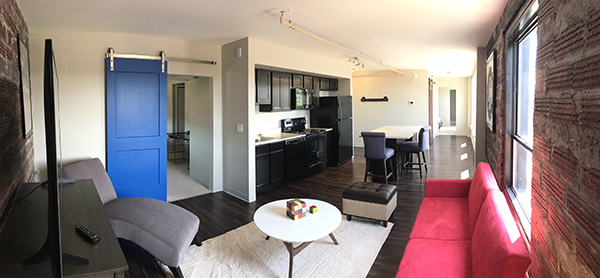
A Beaux Arts Rebirth: 5 & 15 Apartments
Between the two sets of elevator doors on the ground floor of the 5 & 15 Apartments runs a polished brass tube. It is not merely décor, but rather the original brass mail chute of the complex, built in 1921 for $587,000.
Olof Cervin, the architect behind several well-known buildings in the Moline/Rock Island region, designed the nine-story Beaux Arts building that became the Moline Trust & Savings Bank when it opened. In the succeeding decades, the building underwent several acquisitions and name changes. Most recently, its first floor was occupied by Chase Bank, which continues to operate there.
Moline Preservation Society President Brandon Tidwell pointed out some of the structure’s exterior highlights: “The building is crowned with a notable cornice, and just below is a detailed frieze with intricate garlands, wreathes, and urns, which add to the overall visual appeal of the building.”
In 2014, The Amin Group and Russell purchased the building. They challenged Legat to design renovations that would transform the offices on the building’s upper floors into apartments. Today, the fully occupied building houses 31 units on floors two through nine, including a two-bedroom unit on the topmost floor.
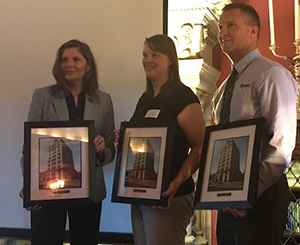
The Moline Preservation Society presented the Adaptive Reuse of a Historic Commercial Structure award to The Amin Group, Ctwo Hotels, Russell Construction, and Legat Architects.
According to Tidwell, “The units feature a modern look with exposed air ducts, granite countertops, and hardwood floors while retaining historical features such as exposed brick and the original entry doors.”
Existing restored materials including imported marble, terrazzo floors, and brass accents line the hallways, and a spiral staircase runs throughout the building.
Tidwell said, “The renovation of this historical structure has saved a valuable piece of Moline architectural history while meeting a growing demand for affordable housing in an urban environment.”
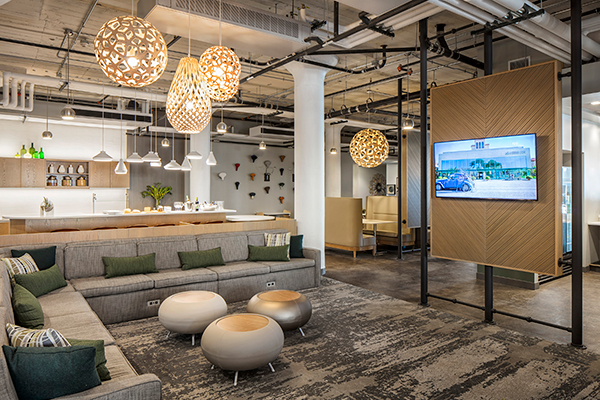
Art Deco Revival: Element Moline
A ten-foot-wide mural greets guests entering Element Moline’s courtyard. The mural displays a black-and-white aerial photo of downtown Moline in the mid-50s. One building within that photo is the six-story facility in which they are staying . . . but in the photo, the building is a warehouse.
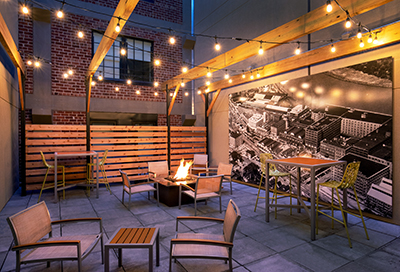
Crandall Transfer & Warehouse Co. occupied the Art Deco facility when it opened in 1920. In the following decades, it underwent various transformations, including one stint as a Sears Roebuck & Company warehouse between 1950 and 1960. Most recently, Moline Promenade Investors LLC, part of The Amin Group, purchased the facility.
In 2013, the City of Moline and Moline Promenade Investors, LLC undertook a journey to transform the vacant building into The Q, a transit-oriented development that has signaled a revitalization in Moline and aspires to reconnect the entire Quad Cities region to Chicago via rail.
The public-private partnership enlisted the Legat/Russell team to design and build the hotel portion of The Q. When Element Moline opened in March, it not only became the eco-conscious Element Hotel (part of Marriott International) brand’s first adaptive reuse project, but also its first Illinois property.
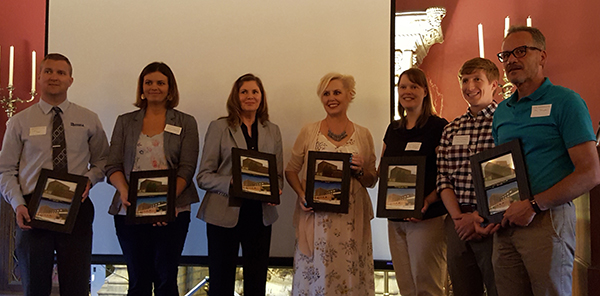
The project received an award for Adaptive Reuse of a Historic Commercial Building. Organizations that accepted the award included the City of Moline, The Amin Group, Ctwo Hotels, MetroLINK, Renew Moline, Russell, and Legat.
Tidwell commented that “many challenges had to be overcome and a lot of people had to work closely together to make this project a success.”
The rehabilitated building houses the main lobby and 56 rooms, while a four-story addition has 49 rooms. The addition tops another one-story expansion that includes a pool, fitness center, and drop-off area. And the complex will soon welcome a restaurant, coffee shop, and other businesses. A glass-enclosed atrium/grand hall, also designed by Legat, extends from the east side of the hotel.
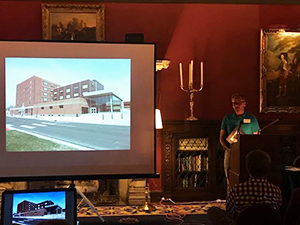
Tidwell praised the “retained architectural elements that give the hotel so much character.” Examples range from the tuckpointed brick walls to the concrete pillars, floor sections, and ceilings that appear throughout the facility.
Ray Forsythe, the City of Moline’s planning & development director, referred to the hotel and the larger development as a “generational project” that brought together many entities.
“If you think about Amtrak’s train service, we could have built a platform and a kiosk to buy a ticket from,” he said. “Instead, we did this project and created a beautiful hotel. It’s really exciting to bring a transportation hub back to Moline and the heart of the Quad Cities.”
Contact us to learn more about adaptive reuse or historic preservation, or comment below to share your thoughts on this post.


